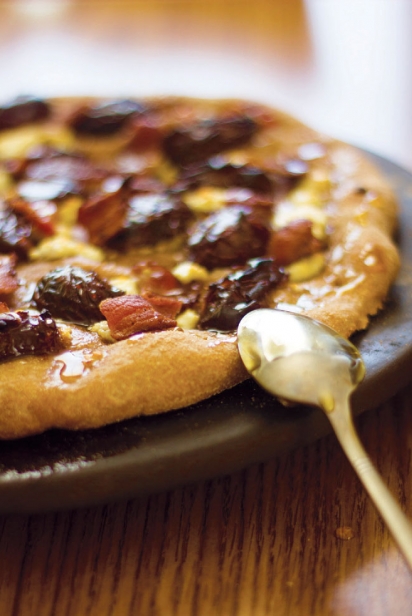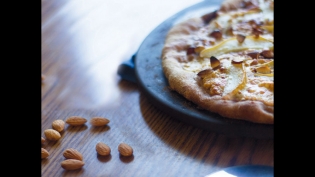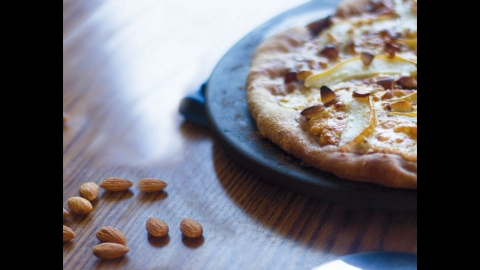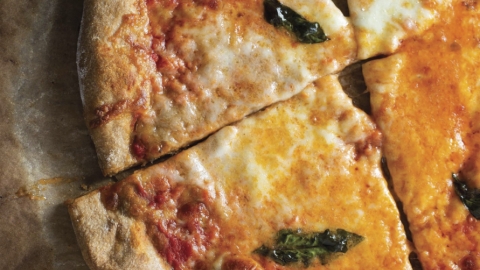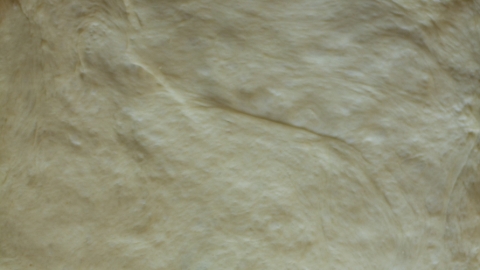Flexible Flatbread
Diverse doughs—from gluten-free to sprouted wheat—invite toppings galore
Homemade pizza—crust crackling, bubbling cheese, lots of fresh toppings—has long been one of my favorite comfort foods. That came to a halt a year ago when I stopped eating cheese due to a lactose intolerance and dairy allergy. I was crushed— until I discovered the wider world of flatbreads, which extends far beyond cheese pizza. They were a revelation. Why hadn’t I been making them all along?
Flatbreads, commonly made with yeasted dough similar to pizza, are infinitely flexible and can accommodate a variety of diets, tastes and seasons. You can make veggie flatbread, meaty flatbread, sweet and savory flatbread, and even flatbread using a gluten-free dough or sprouted-wheat flour.
Clifford A. Wright, cookbook author and expert on Mediterranean cuisine, told me that pizza is a class of flatbreads. “The main difference being pizza is oven baked, yeasted and contains olive oil and usually has toppings—although it doesn’t have to, in the case of several regional Italian examples.”
On the other hand, “Flatbread can be either yeasted or un-yeasted, contain fats or not and can be cooked in tandoor ovens or griddles.” To further distinguish between the two, flatbreads often forgo tomato sauce and instead use other sauces like pesto, barbecue sauce, balsamic glaze, spreadable cheeses like ricotta or mascarpone, or simply a generous drizzle of olive oil.
Flatbreads are not just a cousin of pizza, clarifies Wright. “The rectangular flatbreads—both yeasted and not—with untraditional toppings you see in restaurants these days are derived from the Turkish pide and Arab sfiha. There are also North African versions, too, and such flatbreads can be found in most of the Middle East and South Asian subcontinent.”
This continuum of flatbread provides an excellent platform for cultural exploration of ingredient combos, like Middle Eastern za’atar spice blend with goat cheese and an olive oil drizzle.
The limitless options make flatbreads perfect for breakfast, lunch or dinner, and for parties or weeknight family meals. They’re adaptable for picky eaters and those with allergies or special diets, and, best of all, they can feature the freshest seasonal ingredients available now.
Tomatoes and basil not in season? Don’t fret—flatbread to the rescue. Peruse your local farmers’ market and create a combo with flavors at the height of their season, instead of watery tomatoes flown in from another country. I’ve included suggestions for the winter months, but you’ll want to have flatbread in your meal rotation year-round, so get inspired by the ingredients around you.
Making flatbread is also an excellent activity with family or a gathering of friends. To me, nothing surpasses homemade flatbread, other than the quality connections you can make through a shared experience.
So go forth; be creative. There are lots of flatbread meals and memories waiting to be made.



